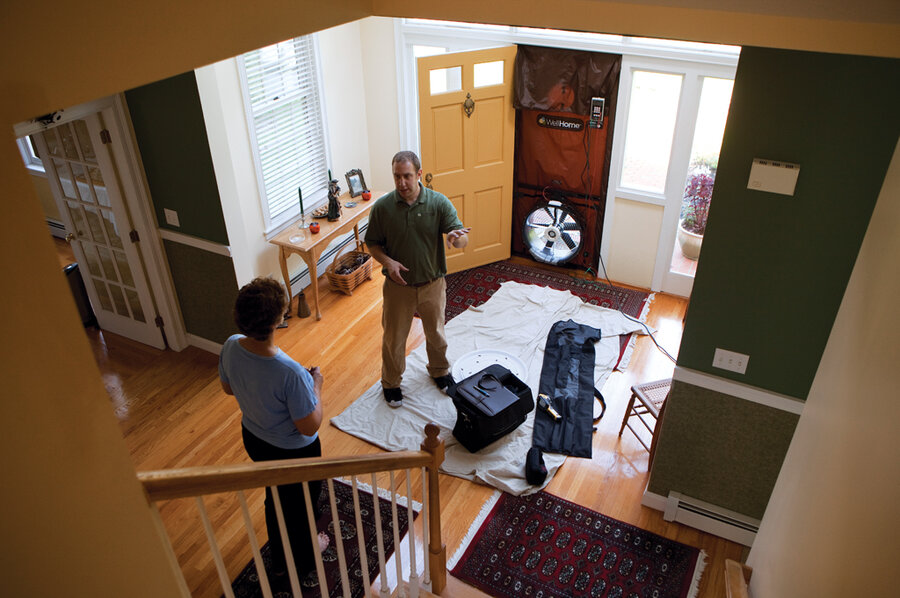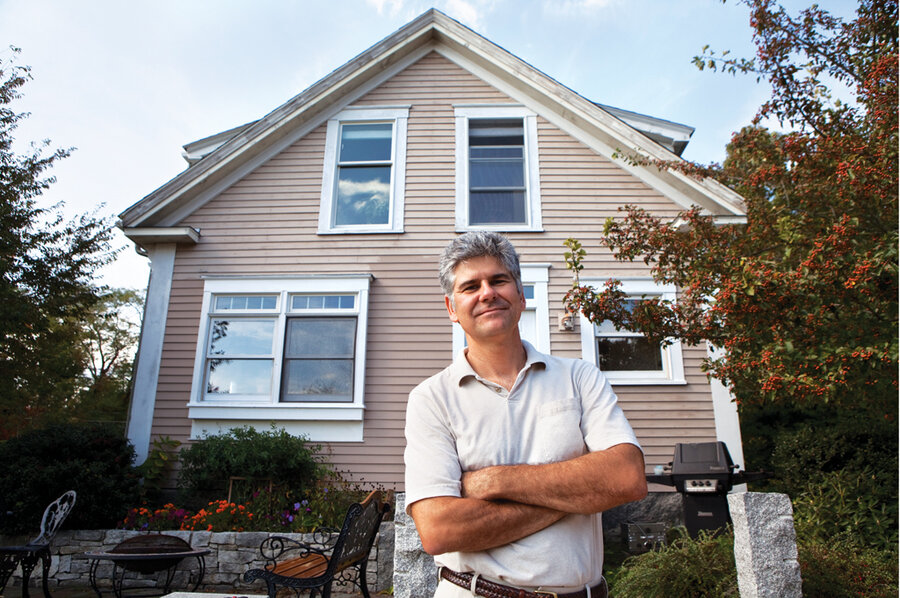Energy-efficient homes, courtesy of federal tax credit
Loading...
Anthony Berke, a software programmer and self-described numbers guy, deemed it prudent to spend $11,000 in August to seal air leaks in his 150-year-old home in Exeter, N.H.
The place was drafty, costing as much as $6,000 to heat during winter, but before this year he couldn't justify the expense. By taking advantage of a local utility program worth $4,500 to him – plus a $1,500 home-efficiency federal tax credit – Mr. Berke expects to slash heating bills and recoup his out-of-pocket costs within two years. "I have enough confidence in this that I cut the number of gallons in my oil contract in half," he said.
"Cash for caulkers," as the tax credit is nicknamed, lets homeowners claim credits worth up to 30 percent of materials costs when they take certain steps to improve home efficiency. Maximum credit: $1,500. The program expires Dec. 31.
With family budgets tight, homeowners aren't always maxing out the credit, since doing so means spending $5,000 on qualifying materials (labor costs don't apply toward the credit). Some are replacing a single door or changing out a few windows.
"In these times, people may not look to do something aesthetic with their homes, or buy furniture or do anything that represents excess," said Jennifer Schwab, director of sustainability for Sierra Club Green Home, a website with advice for home-owners. "But this sort of thing is a necessary evil that's also being recognized by our government as essential for our planet. So taking advantage of the incentives while they exist is a good thing to do."
First, stop the waste
The most popular qualifying jobs include insulating attics, sealing cracks, and upgrading heating and cooling systems, according to Larry Laseter, president of WellHome, a home-efficiency contractor with locations in 13 states. "These projects tend to have the fastest payback and produce the most comfort," he says.
Experts on home efficiency say there are no hard-and-fast rules for how best to use the program, since every home's needs are unique. Still, a few rules of thumb apply. Start by tightening up the building shell, they say. Then move on to bigger-ticket items such as energy-efficient water heaters and boilers.
To get the most out of the tax credit, Ms. Schwab recommends starting with a service that doesn't count toward the tax break: a home-energy audit. Auditors use air blowers, infrared scanners, and other equipment to find a home's biggest trouble spots. Some utilities offer free audits, but most consumers may need to pay $100 to $500 (which is sometimes negotiable, Schwab says).
Experts say audits help homeowners prioritize and make long-term plans for improvements. The next step may be to address items that seem most pressing, such as replacing a drafty door or insulating an attic crawl space. Since labor costs don't count toward the tax credit, do-it-yourselfers arguably get the most bang for their bucks, since all expenses can go toward qualifying materials.
For Shari Wise of Baltimore, the place to begin was obvious: new, energy-efficient windows. Her old metal windows had been drafty, cold to the touch, and difficult to open. She spent $3,000 last year to replace six windows downstairs and paid another $1,700 this year to replace four more upstairs. After subtracting labor costs, she's still able to claim several hundred dollars in tax credits, which helps since she's unemployed and her husband, Robert, is out of work with an injury.
"We paid less than we would have paid for a cheaper window because we got the reimbursement," Ms. Wise says. "And we love the new windows."
To save even more, combine incentives
To make the most of the federal tax credit, homeowners can combine qualifying projects with other incentives, as Berke did at his Exeter, N.H. home. These might be offered by utilities, states, or municipalities. Schwab's tip: Check with a municipality to see if it has received an Energy Efficiency and Conservation Block Grant. If it has, then local public money is probably available to bring out-of-pocket costs down even further.
The path to tighter homes can be fraught with pitfalls, however.
Homeowners need to be sure to hire qualified auditors. Credentials include training through the Home Energy Rating System and the Building Performance Institute. The Sierra Club's Green Home project lists approved auditors at sierraclubgreenhome.com/provider-search.
Another trap: products promoted as qualifying for the tax credit that really don't. Even the experts fall for this one. Tom Simchak, a research associate who studies tax-credit programs for the nonprofit Alliance to Save Energy, paid $350 for an Energy Star-rated exterior door that a vendor touted as eligible for the tax credit. It wasn't.
"You can't necessarily trust what the vendor says [about a product's eligibility], but you can trust the manufacturer," Mr. Simchak says. Next time, he says, he'll take his own advice and look for certification statements in product paperwork or on manufacturers' websites.






